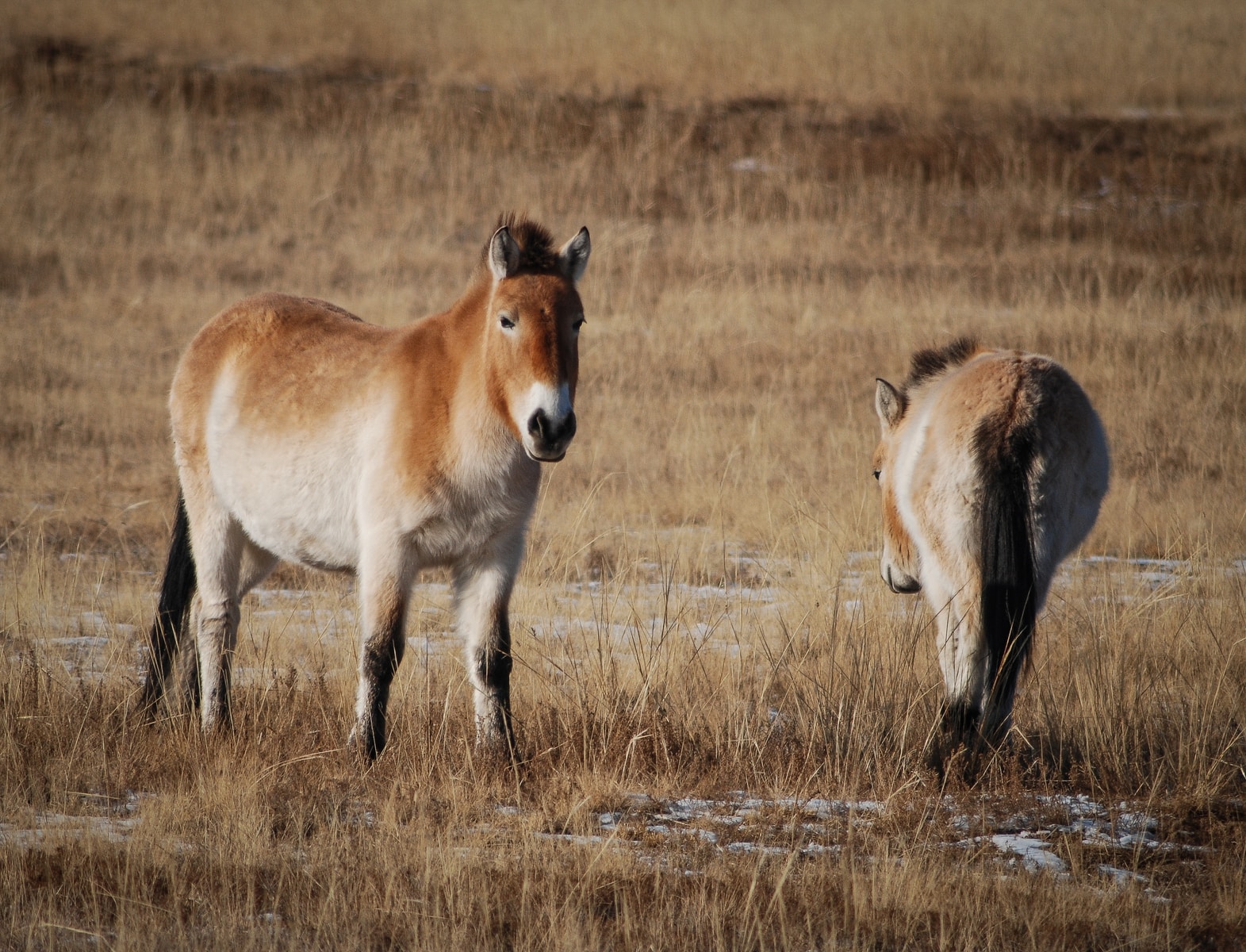The Subtle Signs of EMS

I must preface this article by stating that I am not a veterinarian or any kind of equine clinician. It is not my intent to give veterinary advice other than to suggest you reach out to your veterinarian if you suspect EMS in your horse.
This article is based on my own experience with EMS as well as the dozens of horses I’ve worked with in my role as feed specialist.
What is EMS?
EMS is a complex condition with many moving parts. There are many articles on the subject that can be as clinical as you would care to find. This article is intended to help horse owners identify the subtle signs of the condition and take appropriate measures to avoid laminitis induced by the condition.
Equine Metabolic Syndrome is also referred to as Insulin Resistance. The condition reduces the sensitivity of insulin and its ability to process glucose in the horse’s blood.
EMS has been around for a long time but it has only been identified as a condition by the American Veterinary Association since 2011. Prior to that these horses were deemed “easy keepers” and there really weren’t any treatment protocols in place until recently.
Pharmacology is catching up with a number of clinical trials to find drug therapies for horses. The best therapy is managing diet, environment and exercise.
Factors Associated With EMS
Obesity
Most EMS horses are obese but not all obese horses are EMS is how my EMS vet puts it.
Adipose fat decreases insulin sensitivity so obesity should be avoided in horses.
Obesity in general should be avoided for our horses since the extra weight brings all kinds of problems for joints, hooves and general welfare.
Try to keep your horse at or below a 5 body condition score unless you’re doing dressage or hunters where for some reason the judges want to see 6 BCS on horses.
If you’re going to maintain a 6 BCS on your horse be sure that they are in regular exercise.
Chat with your vet about pulling blood for a leptin value test. There is a strong correlation between high leptin levels and insulin resistance. The leptin test measures levels of adipose fat. It is reliable and highly accurate. While this test will not directly determine insulin resistance the results can be an indicator.
Exercise
Insulin sensitivity can be increased with exercise so keep your pony working and keep them turned out as much as possible.
EMS has become so prevalent in the US domestic herd because we own so many pasture puffs. Up until the last thirty years or so every horse in America had a job to earn its keep. Horses have attained “pet” status and it can be a problem.
I am guilty of having pasture puffs.
Diet
Sugar doesn’t cause laminitis, insulin does. However, the more soluble carbohydrates in our horse’s diet the more insulin they produce to manage the increased glucose levels.
If a horse is insulin resistant they must produce significantly more insulin to manage the blood glucose creating problems for horses.
If your horse is on high NSC feed, unlimited pasture and being fed many sugary treats like apples, carrots and peppermints they are at greater risk of EMS.
Age
For the most part EMS is a middle aged condition. Equine “Metabolic” Syndrome. Just like with humans, a horse’s metabolism will begin to change around 12 to 15 years of age.
EMS will typically present around middle age in horses. This isn’t always the case but it frequently is.
The Signs of EMS
The surest indicator of EMS is very difficult to identify.
Subclinical laminitis, especially when coupled with any or all of the EMS factors is the signal that your horse is a candidate for EMS.
Subclinical laminitis may present with very subtle hoof lameness or not at all. Many horses become accustomed to the mild pain in their feet and soldier on without giving us any outward sign.
I’ll use my mare, Flair, as the classic hindsight example of how this works.
Flair has always been an “easy keeper” and because of some pretty poor advice from “experts” her diet was working against her from birth.
Lush pasture, sweet feed and treats ensured that she was on the portly side even when she was in heavy work.
Speaking of work, Flair was never a very forward horse and had a poor work ethic so as she grew older it was sometimes hard to determine if she was balky because her feet hurt or she was just being a jerk.
Random Lameness
In 2008 she was five years old and she had her first vet call for lameness in her left front. A nerve block determined that it was hoof but the radiograph didn’t show anything unusual. The vet thought that she read a mild rotation but it was very subtle, less than one degree so she dismissed it.
From 2008 on she would have the same issue in the same foot every few months with the same result. Nothing on the radiograph.
In 2010 a new vet noticed that her soles were thin and suggested shoes. Once she had been shod the problem seemed to take a break for a couple of years.
Her job had changed from my daughter’s show pony to my trail horse. She was ridden on the trail at least four days a week.
She was also in great condition since I had started her on a more strict diet consisting of good hay and ration balancer only. She was still being heavily treated with carrots, apples and peppermints.
Subsolar Abscesses
Sometime in 2011 Flair experienced her first subsolar abscess in her right hind. Both the farrier and vet downplayed it as no big deal and something that happens to horses. The farrier located the abscess, cut it out and everything was fine.
As the years progressed she experienced more abscesses in varying hooves. She averaged about four abscesses a year.
Again vet and farrier just shrugged their shoulders. These things happen to horses.
More Random Lameness
About this time I noticed that Flair was randomly avoiding the gravel areas of the trail. No matter how much I leaned on her she stuck to the soft berm of the trail. This provided some interesting rides as long stretches of the trail were along a fifty foot sheer drop into Perkiomen Creek and Flair would have the outside wall of her outside hoof dangling over the edge.
Both vet and farrier had no explanation other than she was getting older and preferred softer surfaces. I was doubtful because some days she charged down the gravel paths at a gallop.
All the radiographs showed healthy bone structures but thin soles.
The Perfect Storm Forms
In 2015 we moved to a new property with no access to trails and I changed jobs. This combination resulted in Flair getting very little work. Three times a month in the ring for 30 minutes, maybe.
Much to Flair’s lazy delight she had been retired at age 12. Even better news for her, the neighbor’s daughter was coming by daily with carrots for the horses and to do some grooming. Wow! Retired, worshipped and showered with treats!
The summer of 2016 was hot, humid and buggy so I wasn’t surprised that Flair was reluctant to leave her stall during the day. In fact I rarely saw her out in the field even at night. Being occupied with my job I really didn’t give it much thought.
The Sunday of Labor Day Weekend I went out for morning feed and Flair didn’t make any effort to come in from the field. She wasn’t grazing. She wasn’t down. She just stood there looking at me with the most pathetic expression and I knew something was wrong.
I grabbed her halter and headed out to get her. Her feet were as hot as irons and she had bounding pulses in all four feet. I led her into her stall and a 14 month nightmare began.
Flair had gotten obese and totally out of condition. She had no muscle definition and was easily a 6 plus BCS.
This was my reward for ignoring the signs she had been giving me for years.
Five years hence Flair is doing fine although it is a constant struggle to manage her weight. Her corrective shoeing has rebuilt her hooves and we are hoping to get her barefoot by spring.
The Challenge of Detecting EMS
EMS is difficult to detect using diagnostic testing. Insulin levels can be elusive and it’s easy to get a false negative. If insulin levels are abnormally high is a clear positive. If insulin levels are low all it means is that the blood was drawn during a period of normal levels.
Oral glucose tests give better results but they also run a risk of inducing acute laminitis.
My own experience as well as many professional experiences have shown me that although subtle the early signs of EMS are a reliable indicator. Taken individually these symptoms may be caused by a number of different conditions. When these symptoms present collectively it’s a different story.
If your horse is obese, experiences random lameness and more than normal subsolar abscesses it’s time to look at EMS as a likely cause.
Thin soles on radiographs are an indicator of chronic subclinical laminitis. Because subclinical laminitis typically involves the entire lamellar structure evenly, the entire distal phalanx sinks inside the hoof capsule without rotation.
The majority of EMS cases are identified through observation. If it looks like a duck…
I Treat All Horses as if They Are Metabolic
A big part of the treatment for EMS is plenty of exercise, weight management and control starch intake.
If your horse is metabolic this will avoid major health issues.
If your horse ISN’T metabolic how is this management plan a bad idea?
Keep them slim and watch the starch.
Here’s my bedside manner on treats, “If you think your mare will hate you for not giving her her daily apple and carrots she’s really gonna be pissed at you when her coffin bone pushes through the bottom of her hoof and you need to euthanize her.”
Trust me, you really don’t want to deal with metabolically induced laminitis. It’s the worst nightmare for a horse owner. It isn’t much fun for the horse, either.

3 Comments
Hils · September 5, 2021 at 12:31 pm
Thanks for your insights
Kathy Orton · March 12, 2022 at 7:39 pm
Reading this article brings back memories, and not good ones!! I got a horse that unknown to me was a metabolic horse. As he put on weight, I soon discovered! He foundered and the battle began!! After 18 months of intense work between my vet, farrier and myself, we finally had him on solid ground.. He was 15 when I got him. Unfortunately, I lost him a few months later to a massive heart attack. Just wasn’t meant to be.
Brooke Ludwig · January 15, 2023 at 9:10 pm
Thanks so much!!!!